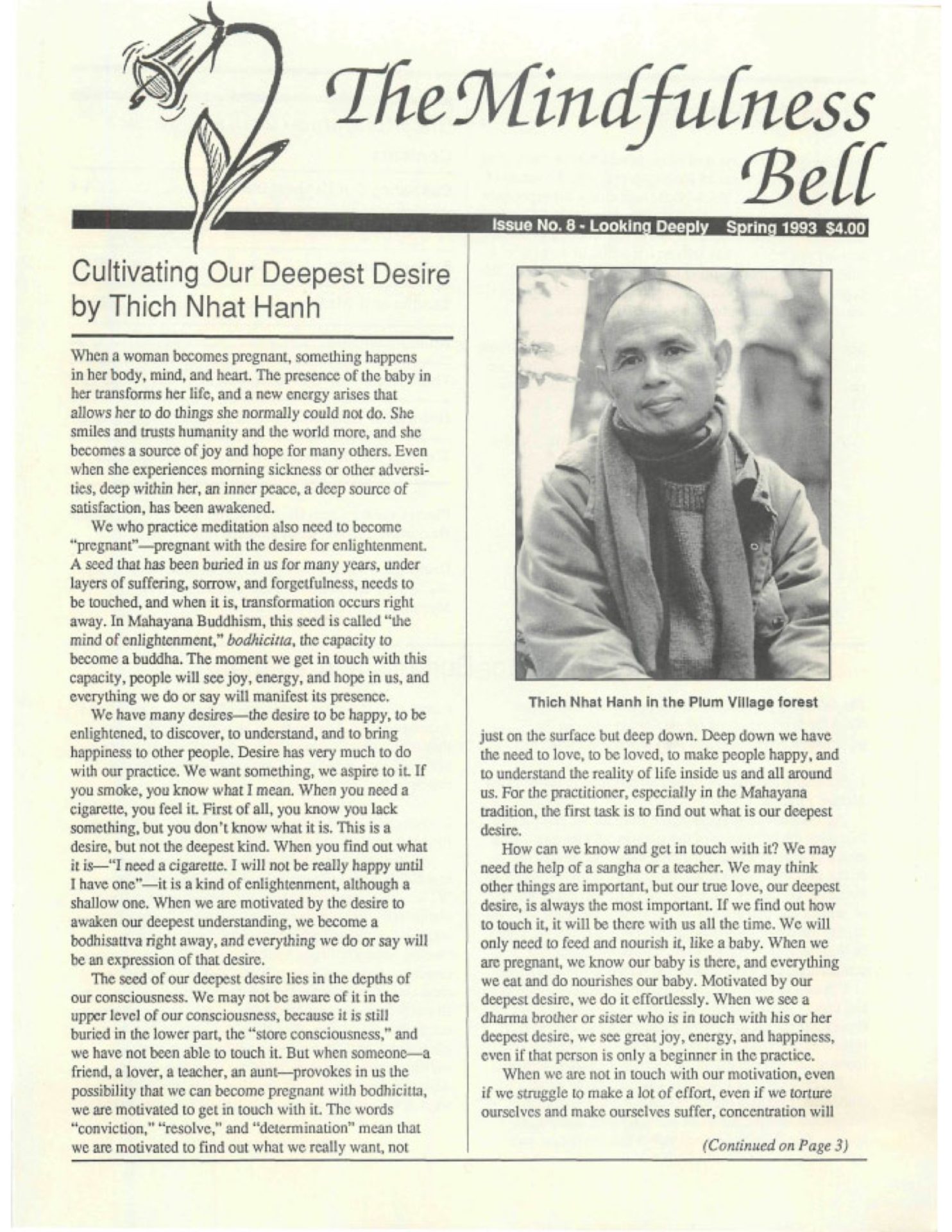By Richard Brady in March 1993
A teacher for more than twenty years, I began Zen Buddhist practice four years ago. It is the teacher’s job to touch the student’s deepest desire to practice, so that the work comes from his or her core, realizing great energy. In this state, one is described as having “the mind of enlightenment,” or bodhicitta. Thay’s beautiful teachings in June evoked bodhicitta in me. I felt the seeds of love,
By Richard Brady in March 1993
A teacher for more than twenty years, I began Zen Buddhist practice four years ago. It is the teacher's job to touch the student's deepest desire to practice, so that the work comes from his or her core, realizing great energy. In this state, one is described as having "the mind of enlightenment," or bodhicitta. Thay's beautiful teachings in June evoked bodhicitta in me. I felt the seeds of love, responding to the stimulation of his teachings and the sangha that had gathered.
A school teacher's job is generally not easy. Each student brings a unique history, base, and readiness to receive. In this context, Thay talked about the teacher's role in the Rinzai Zen tradition. The teacher must understand who the student is and recognize that a particular kung an is capable of touching the student's deepest interest and desire to understand. The mathematics teacher's job," Thay said, "is not to teach the student mathematics, but rather to remove the barriers that prevent the student from learning mathematics." The most serious barriers to learning are the seeds of pain, fear, and suffering. These seeds can erect a wall around the garden of the store consciousness and make it nearly impossible for new, healthy seeds to be planted or old ones to be watered. How can students in this condition be transformed?
Thay also taught us early in the retreat that learning how to benefit from the presence of the sangha was the most important opportunity the retreat offered. The dharma talks and the practice were secondary, he said. At Plum Village, sangha was built in many ways. Affinity groups brought people with common concerns together. Special occasions such as tea ceremonies, formal meals, Plum Village's tenth anniversary celebration, precept recitations, and an ordination ceremony were interspersed throughout the month. At the Dharmacarya Ceremony, the sangha celebrated the empowerment of nine members as dharma teachers. Thay also helped build the sangha in symbolic ways. To emphasize the importance of mutual support, He gave each retreatant an "I walk for you" sticker to put in his or her shoe prior to the first walking meditation. Thay's teaching on interbeing further helped dissolve the distinctions between individual sangha members. When my practice felt ragged, I could feel the presence of other parts of "myself practicing beautifully and joyfully, helping me get back on track.
As I reflect on these lessons from Plum Village, I wonder what to do with them. They are not exactly prescriptions for better teaching. They are more like seeds planted deep in my soil. Better teaching will grow naturally as I tend my garden with mindfulness.
Richard Brady, True Dharma Bridge, is a high school math teacher at Sidwell Friends School in Washington, DC


